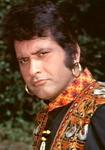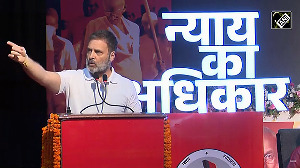If constructing a presentation can be pure anxiety, then listening to one can be sheer agony. Both sides dread the experience. It's like a breakup talk with fewer tears and more clip art.
Poor presentations cost companies sales, damage their reputations, and waste executives' time. You may have heard people say, "Show, don't tell." In response, you obsessively surf the Web looking for the perfect image to reinforce your point. At midnight, you call over your spouse to weigh in on the choice: "Honey, which one better says 'innovation'? The bunny coming out of the magician's hat or the smiley-face guy with a lightbulb over his head?" Quick, pull out your business card: Does it say "Graphic Designer"? If not, relax. (If it does, you may continue stressing.)
We can relieve the two primary anxieties that presenters feel. First, we need to end, once and for all, the cult of clip art, as well as its splinter sect of stock photography. "Show, don't tell" doesn't mean that you add a world map to your slide about "thinking globally." That's decoration, not communication.
A good idea doesn't need visual drapes. When James Carville said, "It's the economy, stupid," he didn't pause to send his direct reports out looking for pictures of dunce hats. ("Sorry, James, we couldn't find a dunce hat, but is a kid drooling on his desk 'stupid' enough?")
"Show, don't tell" can be easier than it sounds. Just bring a little reality into the room. Tom Duncan, the president of the U.S. division of Positec Power Tool Group, had a sales call last year with a key account. At the last minute, he abandoned his PowerPoint presentation, filled with a predictable homage to the virtues of his tools.
Instead, he set two drills on the table -- his and his competitor's. He disassembled them side-by-side to show the durability of Positec's design. His audience's reaction to this surprising absence of PowerPoint slides? "They loved it," Duncan says, and he closed the deal.
The second killer is the presenter's need to be comprehensive. We get it: Some research went into the project, and every detail is a gem. Cutting that fifth bullet point on slide 17 is torture.
But it shouldn't be. Think about yourself as the director of a play, and you're allocating speaking parts among your main points. You can create a great monologue or a great dialogue, but if you've got 22 characters speaking, you haven't developed any of them properly. So don't think about the pain of cutting the bullet point on slide 17, focus on the extra lines given to the lead characters.
A VP of operations for a national department-store chain was leading an effort to help personnel reclaim their time from unnecessary tasks and procedures. He had plenty of examples to discuss, but in presenting his recommendations, he avoided talking about all of them. Instead, he highlighted the single most glaring example of wasted work.
Kicking off his presentation, he shoved an unruly stack of paperwork across the table. Five hundred and nineteen pages of it, to be precise. Then he announced, to the horror of his supervisors: "This is two weeks' worth of the audit documentation that's required of our stores. You've all heard the phrase that the road to hell is paved with good intentions? Well, this is the road to hell." His monologue opened the door to changes that have since been implemented.
Feel better? Good. Now here's the bad news. All that anxiety you've had about finding the perfect image and fitting in all your points can now be directed toward the number-one secret of a great presentation: Before your audience will value the information you're giving, they've got to want it.
Most presenters take that desire for granted. Great presentations are mysteries, not encyclopedia entries. An online video called "The Girl Effect" starts by recounting a list of global problems: AIDS. Hunger. Poverty. War. Then it asks, "What if there was an unexpected solution to this mess? Would you even know it if you saw it? The solution isn't the Internet. It's not science. It's not government." Curious? See, it works.
Curiosity must come before content. Imagine if the TV show Lost had begun with an announcement: "They're all dead people, and the island is Purgatory. Over the next four seasons, we'll unpack how they got there. At the end, we'll take questions." We've all had the experience of being in the audience as a presenter clicks to a slide with eight bullet points. As he starts discussing the first one, we read all eight. Now we're bored. He's lost us. But what if there had been eight questions instead? We'd want to stay tuned for the answers.
The best presenters don't structure their presentations by thinking, What's the next point I should make? Instead, they decide, What's the next question I want them to wrestle with?
That concludes our reduced-anxiety presentation. Now we just need a closing graphic. Which do you like better, the giant Xanax pill or the shot of James Carville in the lotus position?






 © 2025
© 2025